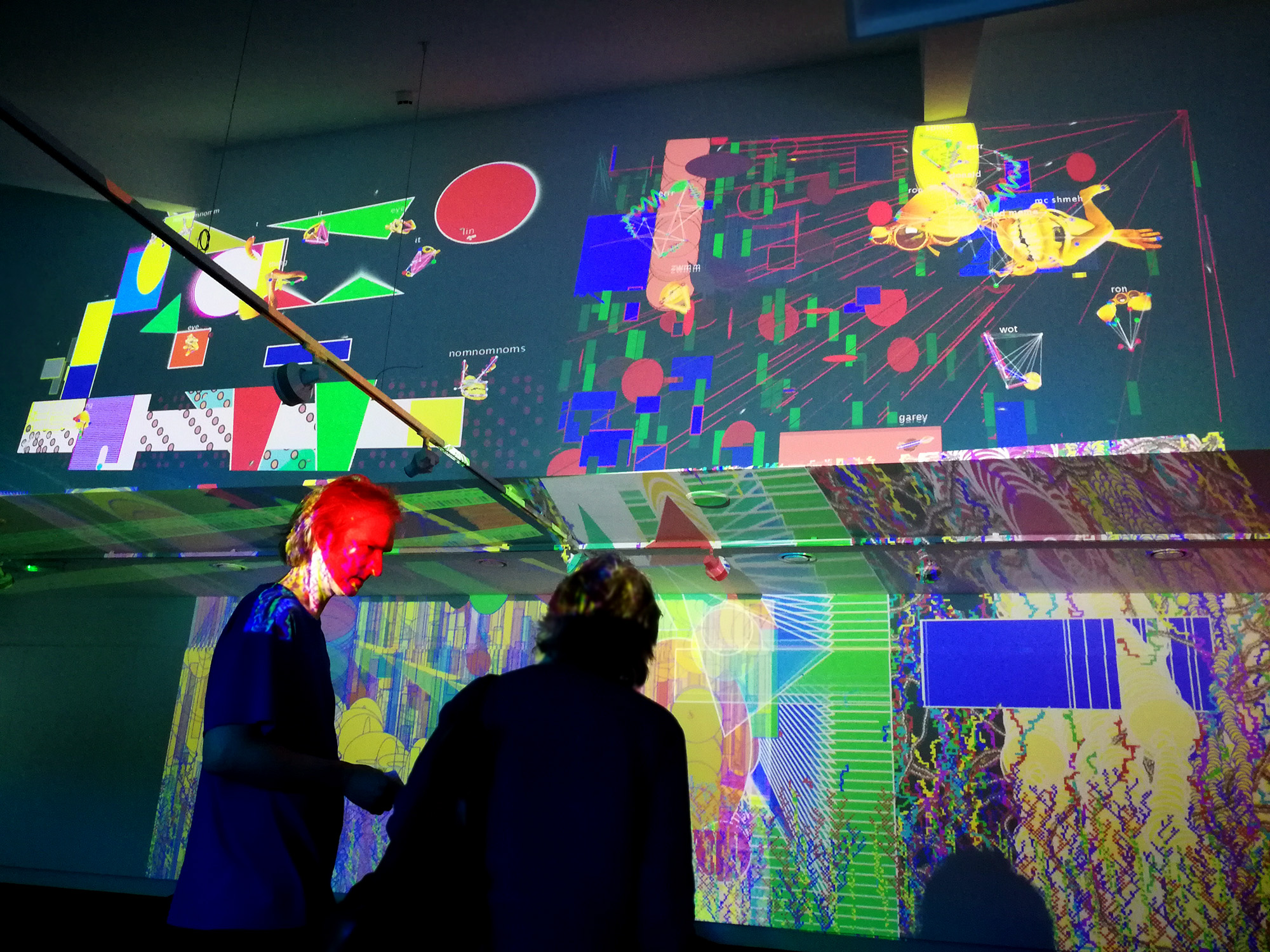A superorganism in nature is a big organism made up of smaller organisms. For example a Coral Reef. Superorganism art is a big piece of art made up of smaller pieces of art. With readily available and easy to use digital tools, Superorganism art dramatically expresses the powers of collaboration, communication, critical thinking and creativity.
In 2018 we created a multiple projection piece with the participation of over two hundred 15-17 year olds as part of the UK’s National Citizens Scheme which aims to give teenagers a range of skills to make them ‘unstoppable’. The workshops were run over 4 days in Canterbury, Kent. Each teenager producing a coded animation and then we combined all the results together into a series of generative programs to be projected on a large scale at a local art festival.

But where did this Superorganism art idea come from?
For years we had been making interactive art with computers and sensors and projecting these works into group shows. We started thinking about how these art works would interact when there was nobody in the space as there is nothing sadder than interactive art with no audience. In these group shows we were told to be careful that our projections and sounds did not leak over into another artist’s space. Eventually we decided that we’d had enough of that – we decided to reverse this rule and worked with artists who deliberately make work which bled into and over each other. Artworks were designed to interact with artworks. Once this is working you put the audience in the middle and allow them to affect things as well and then you see what happens. Nobody knows what will happen! Not even the artists.
Digital Art is particularly good at creating this complexity – outputs change in response to the inputs according to collections of behavioural algorithms and sensors. Combine enough of this together and the resulting chaos can be thrilling to behold – and can develop a life of its own.
We started to think how we could get non-artists involved even more and designed a series of workshops where beginners could learn some creative coding and make small generative animations – unique to each person. Using the Processing language meant these could be taught almost instantaneously – in the space of an hour anyone can create something substantial with a rich variety of output over time. The next stage is to copy each person’s code into a larger container program and then run all the code snippets at once in a shared space. By varying each workshop thematically we further enrich the output. For the Canterbury workshops we used the four elements EARTH, WATER, AIR and FIRE as starting points for people to experiment with.

Now as this is a Genetic Moo project we added in some digital creature design (ANIMATS) and some of our own artificial life forms (for example CORAL and TERMITES) to occupy the shared space and respond to the ever changing animations. The result of all this activity created huge new works – we christened them Superorganisms; a system which allows people to combine small creations into a larger whole.
Superorganisms in nature can be stunning examples of cooperation. Think how thousands of termites come together with no central plan to build huge termite mounds, or the way an ant colony conquers all before it.
Superorganisms are great examples of large-scale collaborative digital art projects. They also demonstrate how easy it is to make small steps in creative coding which can be combined into bigger steps producing dynamic and life-like art works.
This essay was adapted from an entry into Seeds 2018 a zine about Generative Art run by PROCJAM whose motto is ‘Make something that makes something’.
More information about our Superorganism project here.
